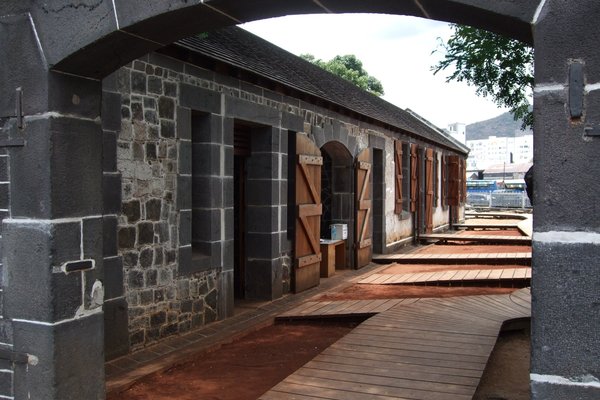Mauritius
Aapravasi Ghat
Aapravasi Ghat comprises the remains of the Immigration Depot where indentured labourers disembarked and were processed before being sent to work on the sugar estates of Mauritius.
It is the most important surviving manifestation of the indentured labour system from the 19th and 20th centuries. Only 3 structures of the original site remain. It includes sheds for immigrants, quarters for officers, a hospital and offices. All immigrants were registered and photographed after disembarkation. After the end of the indentured labour system in the 1920s, parts of the depot were gradually destroyed by the government and by Cyclone Carol in 1960.
Community Perspective: the remains of the site are small (“You can see it in about 5 minutes”), and it is closed on Saturday afternoons and Sundays. The museum exhibition comes recommended for a better understanding of the place.
Site Info
Official Information
- Full Name
- Aapravasi Ghat (ID: 1227)
- Country
- Mauritius
- Status
-
Inscribed 2006
Site history
History of Aapravasi Ghat
- 2006: Advisory Body overruled
- ICOMOS advised Deferral, to place the proposal into a broader "Indentured Labour" context.
- 2006: Inscribed
- Inscribed
- Type
- Cultural
- Criteria
- vi
Links
- UNESCO
- whc.unesco.org
- Official
-
- aapravasi.govmu.org — Aapravasi Ghat World Heritage Site
- Related
-
- en.wikipedia.org — Wikipedia on Aapravasi Ghat
All Links
UNESCO.org
- whc.unesco.org — whc.unesco.org/
Official Website
- aapravasi.govmu.org — Aapravasi Ghat World Heritage Site
Related Resources
- en.wikipedia.org — Wikipedia on Aapravasi Ghat
News Article
- Nov. 2, 2007 mauritiustimes.com — Critical account of the Ghat's world heritage status
Community Information
- Community Category
- Human activity: Sites of Memory
- Human activity: Transport and Trade
Travel Information
Recent Connections
-
Untranslated Toponyms
Wiki states that "The name Aapravasi Gh… -
Memory of the World
The Records of Indentured Immigration (… -
Slow Starters
1995-2006 : 11 years
Connections of Aapravasi Ghat
- Geography
-
-
Situated in one of the SIDS
Mauritius 2006 -
Indian Ocean
-
Located in a Capital City
Port Luis (Capital of Mauritius)
-
- Trivia
- World Heritage Process
-
-
First sites filling gaps cited by ICOMOS
slavery-migration 2006
-
WHS inscribed solely on Criterion VI
2006 -
Inscribed on a single criterion only
vi. to be directly or tangibly associated with events or living traditions, with ideas, or with beliefs, with artistic and literary works of outstanding universal significance. (The Committee considers that this criterion should preferably be used in conjunction with other criteria) -
First inscriptions
Mauritius 2006 -
Slow Starters
1995-2006 : 11 years
-
- Human Activity
-
-
Human Migration
Immigration depot for Indian indentured labourers to work in the sugar plantations of Mauritius, or to be transferred elsewhere -
Sugar
The Ghat was the arrival point for c half a million indentured labourers coming from India to work in the sugar plantations of Mauritius.
-
- Constructions
- WHS on Other Lists
-
-
Memory of the World
The Records of Indentured Immigration (2015)See www.unesco.org
-
- Timeline
-
-
Built in the 19th Century
The Ghat was the reception location for c 500000 indentured labourers arriving from 1834-1920. The main buildings date between 1849-65
-
- Visiting conditions
- WHS Names
-
-
Untranslated Toponyms
Wiki states that "The name Aapravasi Ghat, which has been in use since 1987, is a direct Hindi translation of "Immigration Depot". Aapravasi is the Hindi word for "immigrant", while ghat literally means "interface" reflecting the structure's position between the land and sea, and symbolically marking a transition between the old life and the new for the arriving indentured immigrants" (Wiki). Actually "Ghat" in this location translates adequately from Hindi simply as "Wharf"
-
News
- mauritiustimes.com 11/02/2007
- Critical account of the Ghat's wor…
Recent Visitors
Visitors of Aapravasi Ghat
- AC
- Adrian Turtschi
- Afshin Iranpour
- Alexander Lehmann
- Ali Zingstra
- Ammon Watkins
- Ask Gudmundsen
- Atila Ege
- Bill Maurmann
- Bram de Bruin
- Christoph
- Christravelblog
- Corinne Vail
- Dennis Nicklaus
- Dorejd
- Els Slots
- Eva Kisgyorgy
- Fan Yibo
- Farinelli
- Felicité
- Fmaiolo@yahoo.com
- George Gdanski
- GerhardM
- HaraldOest
- Harald T.
- Harry Mitsidis
- Hdwilsonau
- Iain Jackson
- Ingrid
- Ivan Rucek
- Jarek Pokrzywnicki
- Jay T
- jballard650
- Jesse S 2010
- JobStopar
- Jonoprout
- Justin Rickey
- Karito Vies
- Kbecq
- Kevin McFarland
- Krijn
- Laurine
- Loic Pedras
- Luis Filipe Gaspar
- Mahuhe
- marcel staron
- Martina Rúčková
- Michael Ayers
- Michael Novins
- Mikko
- Monica Tasciotti
- Mtlmr
- Naim Y
- Nihal Ege
- Olli-Pekka Turunen
- PabloNorte
- Patrik_globe
- Philipp Leu
- Philipp Peterer
- Piotr Wasil
- Potsdamer
- qwertzlbry
- Randi Thomsen
- Reiseblog
- Reisedachs
- Roman Raab
- Rudegirl
- Samy G
- Sandmann15
- Slavi
- stephanvermeulen
- Svein Elias
- Szucs Tamas
- Thomas van der Walt
- Truls Brekke
- Vernon Prieto
- VMThumper
- WalGra
- Wo_ko
- Yongcheng Liu
- Zoë Sheng
Community Reviews
Show full reviews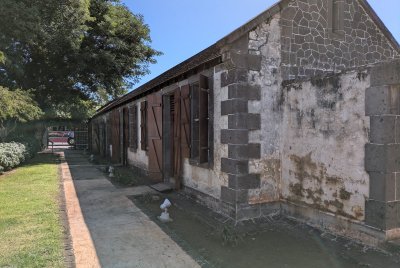
There's nothing wrong with the site, and I agree that the indentured servant phenomenon that moved so many millions around the globe deserves some sort of World Heritage recognition. There's just so little to see at this site. Just one restored building, really, and a few other foundations/walls. The small rooms do have signage that do a good job of explaining the whole "movement of indentured servants as a solution for getting cheap labor" idea once nations had banned slavery, and it was interesting to learn the history. Unfortunately, the downstairs museum exhibit hall was closed during the hours we visited (even though there were staff at the front desks, as they allowed me in to use the toilet), so we missed seeing that.
Keep reading 0 comments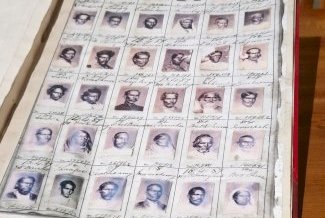
I visited this place in May 2022 and think it was wonderful. It seems that older reviewers could not benefit from the excellent exhibition in the museum which is really great as it explains in a very good didactic way (explanations, exhibits, reconstructions) the life of the first immigrant policy in the world. Mauritius is the site of the first large-scale use of indentured labour in the modern world. Between 1830 and 1910 more than 462,000 people arrived in Mauritius. Appr. 70% of modern Mauritians are descendants of these workers. Really impressive. The mueseums shows a lot of very illustrative items, e.g. the way the new arrivals were registered and how and where they waited to be allocated to work. Having seen this exhibition, the (yes few) buildings outside can be understood and valued much better.
Access is easy, it is right downtown the capital city of Mauritius, Port Luis.
Keep reading 0 comments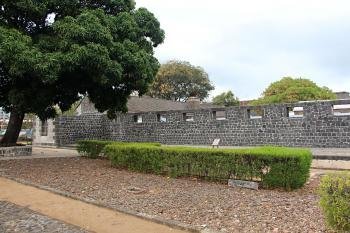
I was really lucky I could enter, as the site was already closed when I arrived on a Saturday at 12:30. The friendly keeper let me in, so I could have a look at what is unfortunately a very underwhelming WHS. The area itself is tiny. You can see it in about 5 minutes. The only decent building is reconstructed. From the rest, only a few walls or even less is left. It has very limited opening times. Mon-Fri 9-4. Sat 9-12, Sun closed. Fun fact is that it’s basically signposted from the airport on the other end of the island.
Keep reading 0 comments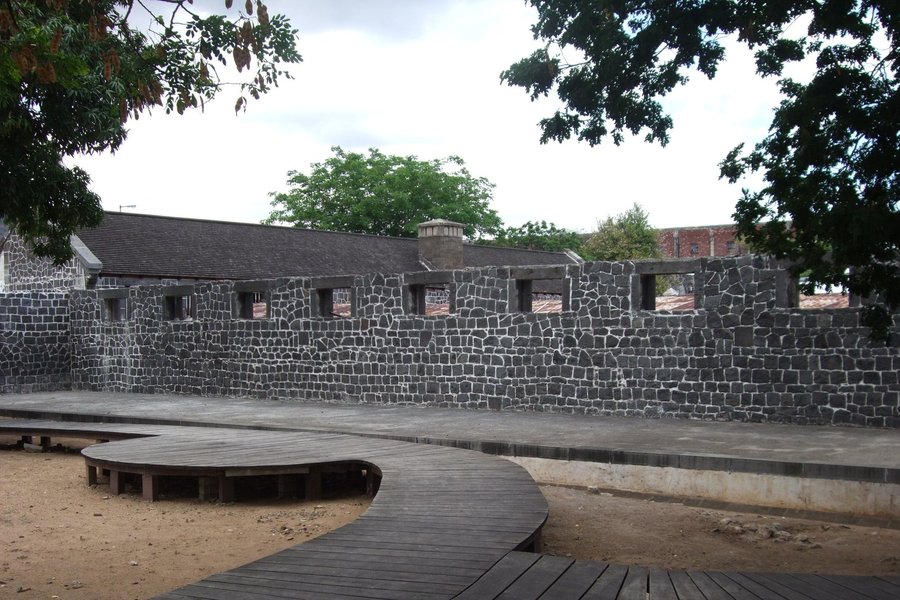
I just visited this site a week before with my wife during our one week trip in Mauritius.
Actually I have went the palce twice, first day I can't find the entry and just took a picture due to Sunday.So I went to the site on Monday again.
I didn't know there is a World Heritage in Port Louis before, I just happen to meet the site while we walk through the main street.
Keep reading 0 comments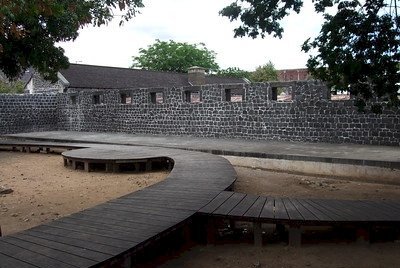
Aapravasi Ghat is right in the center of Port Louis, the capital of Mauritius. The site is signposted from all over town, displaying its WH status proudly.
From the outside the complex looks like the remains of a fortress: not unlike those in Ghana, or even the Defense Line of Amsterdam in The Netherlands. It’s now located just a few meters from the water line in the harbour.
Entrance to the site is free, as is the guided tour. The first thing that I noticed is that it all looks very recently restored. I had heard bad reports about its status in the past, but right now the Aapravasi Ghat Trust Fund is taking things seriously. Even a whole new interpretative center is under construction at the moment. That would be a good addition I think, as the remains of the site are small and it’s hard to imagine what happened here from some crumbling stone walls. Archaeological digs are still underway too, in the hope of recovering more. Only about a third of the site is left now, the rest has been paved over during the construction of the main road through Port Louis.
The best-preserved parts are the lavatories & baths for the immigrants and the small hospital. I went around with a guide once and after that did another round on my own. I knew beforehand that there isn’t much to see, and I already was glad to see that the caretakers are making …
Keep reading 0 comments
I think it is a wonderful site.I first visited the site a couple of years ago and I was immediately overwhelmed with emotion,just standing on the very place where my ancestors landed and where temporarily housed.I enjoyed the slide shows and the talk,including the guided tour.That same year I went to Bihar and traced my ancestral village and roots.It was a tremendous feeling!I wish the organisation my best wishes and I congratulate them for their excellent work.
Keep reading 0 comments
